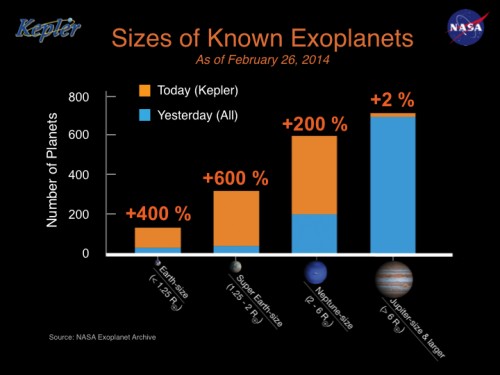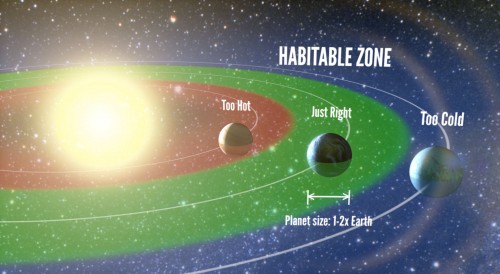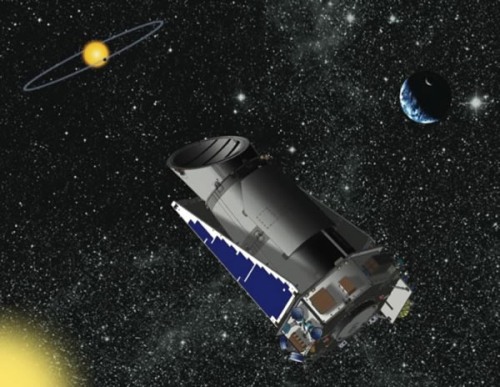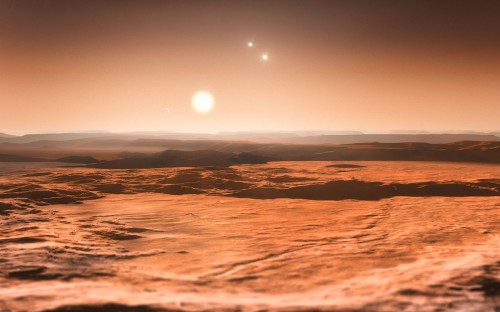Tag archives: exoplanets
Juggling Newton’s cradles, physics poetry, the birth of exoplanetary research and more
By Tushna Commissariat
We get many exciting, interesting and sometimes strange e-mails in our Physics World inbox on a weekly basis. But we were pleasantly surprised to receive one from Jay Gilligan – a professor of juggling at the University of Dance and Circus in Stockholm, Sweden. Together with one of his former students, Erik Åberg, he has perfected the art of juggling with giant Newton’s cradles. While juggling undoubtedly involves a lot of physics – everything from air resistance, speed, velocity and of course gravity comes into play – this takes it to an even more physical, if you will excuse the pun, level. Do watch the video above to see all of the amazing tricks that the duo can do, and try them for yourself if you are dexterous enough.
The Magnus effect in action, destroying the world, an astrophysicist camps out in Manchester and more
By Hamish Johnston and Michael Banks
This week’s Red Folder opens with a fantastic video (above) from the folks at Veritasium. It involves dropping a spinning basketball from the top of a very tall dam in Tasmania and watching as the ball accelerates away from the face of the dam before bouncing across the surface of the water below. In comparison, a non-spinning ball simply falls straight down. This happens because of the Magnus effect, which has also been used to create flying machines and sail-free wind-powered boats. The effect also plays an important role in ball sports such as tennis and is explained in much more detail in our article “The physics of football”.
‘Physics across Canada’ tour kicks off in Edmonton
By Hamish Johnston
Greetings from Edmonton on the western edge of the Canadian prairies, where I am starting my “Physics across Canada” tour. The nation’s physicists are gathering here for the annual Canadian Association of Physicists Congress at the University of Alberta.
The congress opens today with a session that promises to be out of this world. Exoplanet expert Sara Seager of the Massachusetts Institute of Technology is talking about the search for habitable worlds beyond our blue planet. I am really keen to learn more about the latest techniques for studying the atmospheres of exoplanets and I plan to record an interview about that very subject later this week.
View all posts by this author | View this author's profile
William Blake’s graphene sensor, boiling an egg inside out, quantum woo and more
By Hamish Johnston
Are you tired of the same old boiled egg staring up at you every morning? Then why not try this simple trick from the Japanese chef Yama Chaahan, who in the video above creates a boiled egg with the yolk on the outside and the white in the middle. There is angular momentum and fluid dynamics involved, and if you don’t understand Japanese, the Huffington Post has a step-by-step guide in English.
Aliens and atheists
By Margaret Harris
Press releases are supposed to be attention-grabbing, but occasionally, I come across one that really goes the extra mile. That was the case this morning when – my eyes still a bit bleary, my coffee still un-drunk – I spotted a real doozy in my in-box.
“Are the world’s religions ready for ET?” the headline asked.
Some might regard this question as unimportant. Even if you care about the official views of religious groups (and many people – including some religious people – do not), their opinions about life on other planets are surely less relevant to daily life than their guidelines on, say, human morality. After all, if extraterrestrial life does exist, it is an awfully long way away: the nearest star system to ours, Alpha Centauri, is more than four light-years off, and astronomers do not regard it as a good candidate for habitable planets. So, if extraterrestrial life is ever discovered, the Earth’s religions will have plenty of time to get used to it before it causes them any practical problems down at the local synagogue, mosque, temple or church (“Baptismal Ceremony ET: For alien life forms unable to answer for themselves”).
View all posts by this author | View this author's profile
Exoplanets are everywhere

The latest haul of exoplanets is skewed towards Earth-like masses. (Courtesy: NASA)
By Hamish Johnston
Just a few years ago the idea that more than 700 exoplanets could be discovered in a single study would seem fantastical. But that’s exactly what astronomers working on NASA’s Kepler mission have just done.
View all posts by this author | View this author's profile
How common are Earth-like planets?

Are Earth-like planets very common? (Courtesy: Petigura/UC Berkeley, Howard/UH-Manoa, Marcy/UC Berkeley)
By Hamish Johnston
A decade or so ago it would have been reasonable to wonder if the universe contained any planets that resemble Earth. But now that astronomers have discovered more than 1000 planets orbiting stars other than the Sun, it seems perfectly sensible to think that the number of Earth-like planets could be huge. However, actually finding such planets remains a challenge.
View all posts by this author | View this author's profile
Kepler telescope goes into retirement…for now

Retirement among the stars: Artist’s concept of the Kepler spacecraft. (Courtesy: NASA/JPL-Caltech/Ball)
By Tushna Commissariat
A few months ago, I wrote a blog about NASA’s Kepler space telescope being in a spot of trouble, as the spacecraft shut down and went into “safe mode”. The problem was that two of the four gyroscope-like “reaction wheels” that help the telescope remain steady and pointed in a particular direction had broken. Since May, researchers have been looking at ways and means to fix the problem or work around it.
Unfortunately, after analysing and testing the systems, the Kepler Space Telescope team has decided to end its attempts to restore the spacecraft to full working order, and is now “considering what new science research it can carry out in its current condition”.
View all posts by this author | View this author's profile
Extending the ‘Goldilocks’ zone

A comparison of the inner planets of our solar system, within the habitable zone, to Kepler-62 – a five-planet system about 1200 light-years from Earth. (Courtesy: NASA/Ames/JPL-Caltech)
By Ian Randall
In the modish hunt for exoplanets, the holy grail is discovering such a body within the habitable zone of a star – offering a tantalizing potential for extraterrestrial life. If our solar system is anything to go by, we can expect most planets to form outside of the confines of this zone. What if, however, the habitable zone is really larger than we thought?
This is the idea put forward by Sean McMahon from the University of Aberdeen, Scotland, and colleagues in a recent paper – proposing that the existing definition of the habitable zone overlooks the potential for life to survive below the surface of terrestrial planets that currently lie outside the zone’s reach.
View all posts by this author | View this author's profile
Star has three super-Earths in the habitable zone

Artist’s impression of suns rising over Gliese 667C. (Courtesy: ESO/M Kornmesser)
By Hamish Johnston
No, it’s not Tatooine. This is an artist’s impression of the view from the exoplanet Gliese 667Cd looking towards the planet’s parent star (Gliese 667C). In the background to the right, the more distant stars in this triple system (Gliese 667A and Gliese 667B) are visible and to the left in the sky is one of the other planets, the newly discovered Gliese 667Ce, can be seen as a crescent.
View all posts by this author | View this author's profile